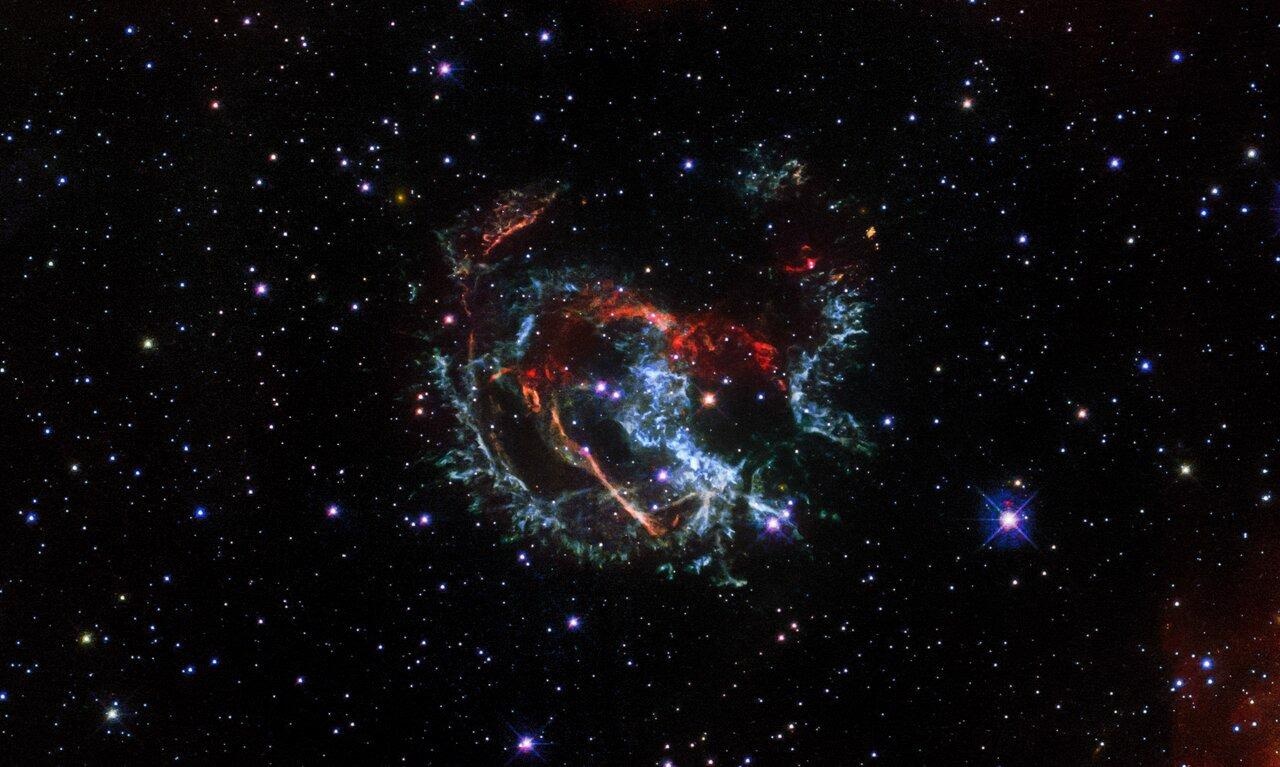Jan 18 2021
The Hubble Space Telescope of NASA and the European Space Agency (ESA) has successfully detected the supernova remnant called 1E 0102.2-7219.
 Hubble captures the supernova remnant 1E 0102.2-7219. Image Credit: NASA, ESA, and J. Banovetz and D. Milisavljevic (Purdue University).
Hubble captures the supernova remnant 1E 0102.2-7219. Image Credit: NASA, ESA, and J. Banovetz and D. Milisavljevic (Purdue University).
Scientists are using Hubble’s images of the supernova remnant to rewind the clock on the growing remnants of this exploded star, in an effort to figure out the supernova event that triggered this explosion 1700 years ago.
This featured star that busted ages ago is part of the Small Magellanic Cloud—a satellite galaxy of the Milky Way situated around 200 000 light-years away. The ill-fated star left behind a gaseous, expanding carcass—a supernova remnant—called 1E 0102.2-7219.
Since the gaseous knots in the supernova remnant are traveling at varying directions and speeds from the supernova blast, the knots traveling toward the Earth are indicated in blue in this composition, and the ones traveling away are colored in red.
The latest image captured by the Hubble Space Telescope reveals these knots of gas racing away from the site of the explosion at an average pace of 3.2 million kilometers every hour. At that pace, one could travel to the Moon and come back in just 15 minutes.
Scientists have investigated the Hubble archive searching for visible-light pictures of the remnant of the supernova, and they have studied the data to arrive at a more precise estimate of the core and age of the supernova explosion.
Based on the researchers’ latest estimates, light from this supernova explosion reached the Earth 1700 years ago at the time of the decline of the Roman Empire. Only inhabitants of the Earth’s southern hemisphere could have visualized this supernova.
Regrettably, familiar records of this major event do not exist. Previous research works had suggested explosion dates of 2000 and 1000 years ago; however, the latest study is regarded to be more powerful.
To find out the occurrence of this explosion, scientists explored the oxygen-rich, tadpole-shaped clumps of ejecta hurled by this supernova explosion. Ionized oxygen glows brightest in visible light and, hence, is considered an excellent tracer.
The researchers used the robust resolution of the Hubble Space Telescope to detect the 22 fastest moving ejecta knots, or clumps, and established that such targets were probably the least to have been slowed down by traveling via the interstellar material.
The researchers subsequently traced the motion backward of the knots until the ejecta merged at one point, detecting the site of the explosion. After knowing this fact, the team could estimate the time taken by the speedy knots to move from the core of the explosion to their present site.
The Hubble Space Telescope also quantified the pace of a suspected neutron star—that is, the crushed center of the fated star—that was flung during the explosion.
According to the team’s estimates, the neutron star should be traveling at over three million kilometers per hour from the core of the explosion to have reached its present position. Scientists have identified this suspected neutron star during observations with the European Southern Observatory’s Very Large Telescope based in Chile, along with the data obtained from the Chandra X-ray Observatory of NASA.